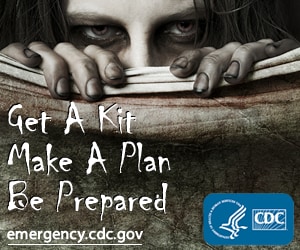Nearly 37 million people live in areas most at risk of hurricanes, an area covering 179,000 square miles along the coastal region stretching from Texas to North Carolina, according to the U.S. Census Bureau. Hurricanes occasionally strike farther north, but such events are rare.
Hurricane History
The Department of Housing and Urban Development estimates that in the summer of 2005 hurricanes Katrina, Rita, and Wilma damaged "more than one million housing units across five states." Of the damaged homes 515,000 were in Louisiana, 220,000 in Mississippi, and nearly 140,000 in Texas.
By 2010, according to the HUD study, three quarters of the 2005 hurricane-damaged properties on "significantly affected" blocks were in good condition (at least on the outside*), but nearly 15 percent of the properties still had substantial visible repair needs, and 11 percent no longer contained a permanent residential structure. Louisiana homes, of the state affected, are most likely to still have unrepaired damage. Mississippi homes were most likely to be either repaired or entirely demolished and left vacant.
*We should note that these estimates do not include homes with mold or other water damage issues that might render the structures uninhabitable.
From a business perspective, in the year following Katrina New Orleans had about 95,000 fewer jobs, with most losses in tourism and port operations. It took nearly two years after Katrina for the number of restaurants in New Orleans to rebound to it's pre-hurricane level (according to restaurant critic Tom Fitzmorris in his book Hungry Town).
Hurricane Demographics
In addition to their physical and economic damage, major hurricanes can cause huge demographic shifts. For example, during hurricane Katrina approximately 1.5 million people over the age of 16 left their homes in Louisiana, Mississippi, and Alabama. And while many have returned, not all have. For example between 2005 and 2010 New Orleans saw its population decline by 25 percent from an estimated 455,000 before the hurricane to 344,829 as of April 1, 2010.
And while New Orleans tends to dominate the news headlines because of the broken levees, Pass Christian, MS actually has sustained a greater proportionate loss in population. Though a small town before Katrina (just under 7,000 according to 2005 Census Bureau estimates) the population had shrunk in half in the year following the hurricane, and many residents did not return. The 2010 Census count shows a resident population of only 4,613 - a sustained decline of 34 percent since the hurricane. Gulfport, MS also declined by an estimated 5,500 residents (-8 percent) between 2005 and 2010.
Less notorious, but just as significant in terms of population shift, was Hurricane Ike in Galveston, TX. Nearly 10,000 residents remained displaced two years after the hurricane. The estimated population before Ike was 57,000 but was only 47,743 at the 2010 Census. The HUD report on housing shows that one quarter of homes in Texas hurricane-affected neighborhoods still showed significant damage in 2010, in part because of the 2005 series of hurricanes and in part because of Ike.
In natural disasters traditional sources of demographic data (building permits, school enrollment records, utility hookups, drivers licenses, etc...) are either no longer available, or provide misleading information about the displaced, remaining, and returning population. Some of the most clever demographic techniques I have seen to date were hurricane-related. At the 2010 Applied Demography conference Mark VanLandingham and Janna Knight presented their techniques for reverse-estimating the post-Katrina population of New Orleans. And Nazrul Hoque, Alelhie Valencia, and Karl Eschbach presented their techniques for filling in the data gaps for post-hurricane Galveston.
Hurricane Preparedness
And in case all this talk of hurricanes has you thinking it's time to update your emergency preparedness kit, the CDC has developed a useful but tongue-in-cheek checklist that will get you through any disaster - even a zombie apocalypse!

Click on image for more information from the CDC.
Image of Hurricane Katrina in the Gulf of Mexico courtesy of NASA-GSFC, data from NOAA GOES

No comments:
Post a Comment
your insights?